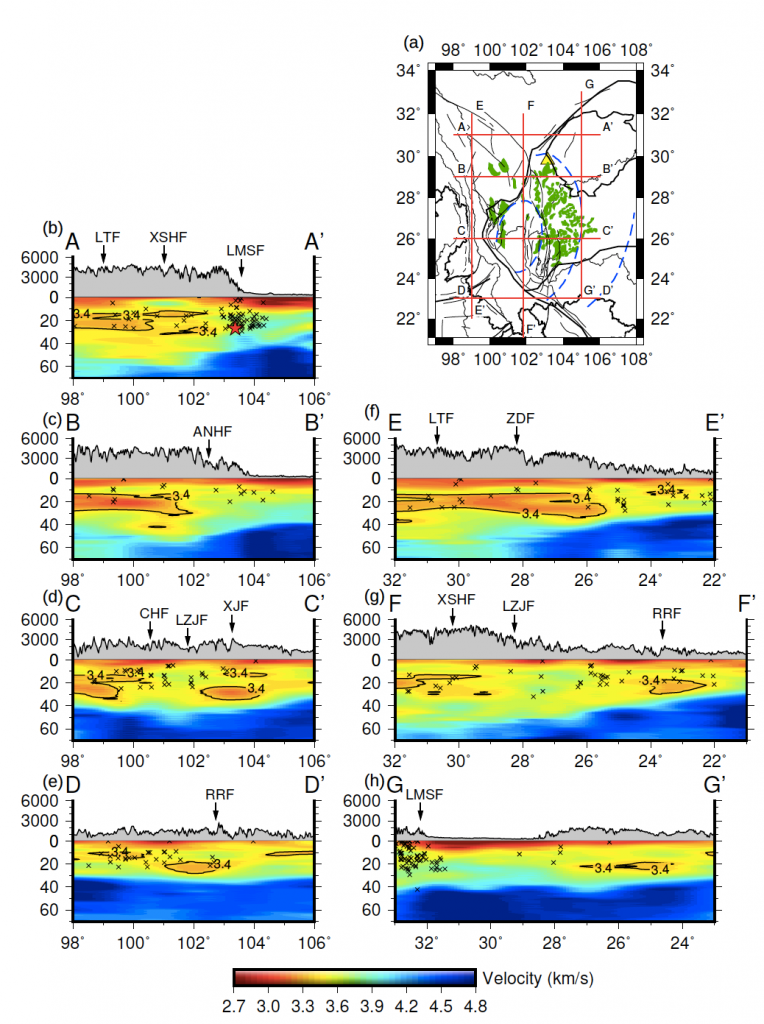Crustal Shear-Velocity Model in Southwest China From Joint Seismological Inversion
Huajian Yao ([email protected]),Yan Yang, Hanxiao Wu, Ping Zhang, Maomao Wang


Figure 2. Seven vertical cross sections, which are represented by the red lines in (a). The green shaded area shows the distribution of the ELIP basalts (Y-G Xu et al., 2004). The blue dashed lines outline the boundary between the inner, intermediateouter zones of the ELIP. The shear-wave-velocity structures across the seven vertical cross sections in (a) are shown in (b)-(h), with the gray shaded areas above showing the topography along the cross sections. The black crosses denote the epicenters of earthquakes (MW>5) that occurred in 1980-2016. The red star represents the epicenter of the 2008 Mw 7.9 Wenchuan earthquake. The arrows above the topography plots denote the locations of major faults. Model Data Format: Lon Lat Dep(km) Vs(km/s) Vp(km/s) Density(gm/cc) * Method: joint inversion of Rayleigh wave dispersion, ZH ratioreceiver function at each station location (Zhang & Yao, 2017, Earthquake Science), then interpolate to obtain the values at each grid location (deg 0.5 x 0.5, down to 70 km depth) using the GMT surface command. * VpDensity are computed with the empirical relationship (Brocher, 2005, BSSA). * 0 km depth means the surface at each grid location. If you have any questions, please feel free to contact Huajian Yao ([email protected])Yan Yang ([email protected]) The original velocity model at each station location can also be obtained at: https://github.com/Dytue/SW_China_Vs_model Please cite the following reference if this model is used in your research: Yao, H. J., Yang, Y., Wu, H. X., Zhang, P.Wang, M. M. (2019). Crustal shear velocity model in Southwest China from joint seismological inversion. CSES Scientific Products., doi:10.12093/02md.02.2018.01.v1 SWChinaVs_2018_Mod20190820
















 位置:
位置:
 2019-05-05
2019-05-05 地球所
地球所

